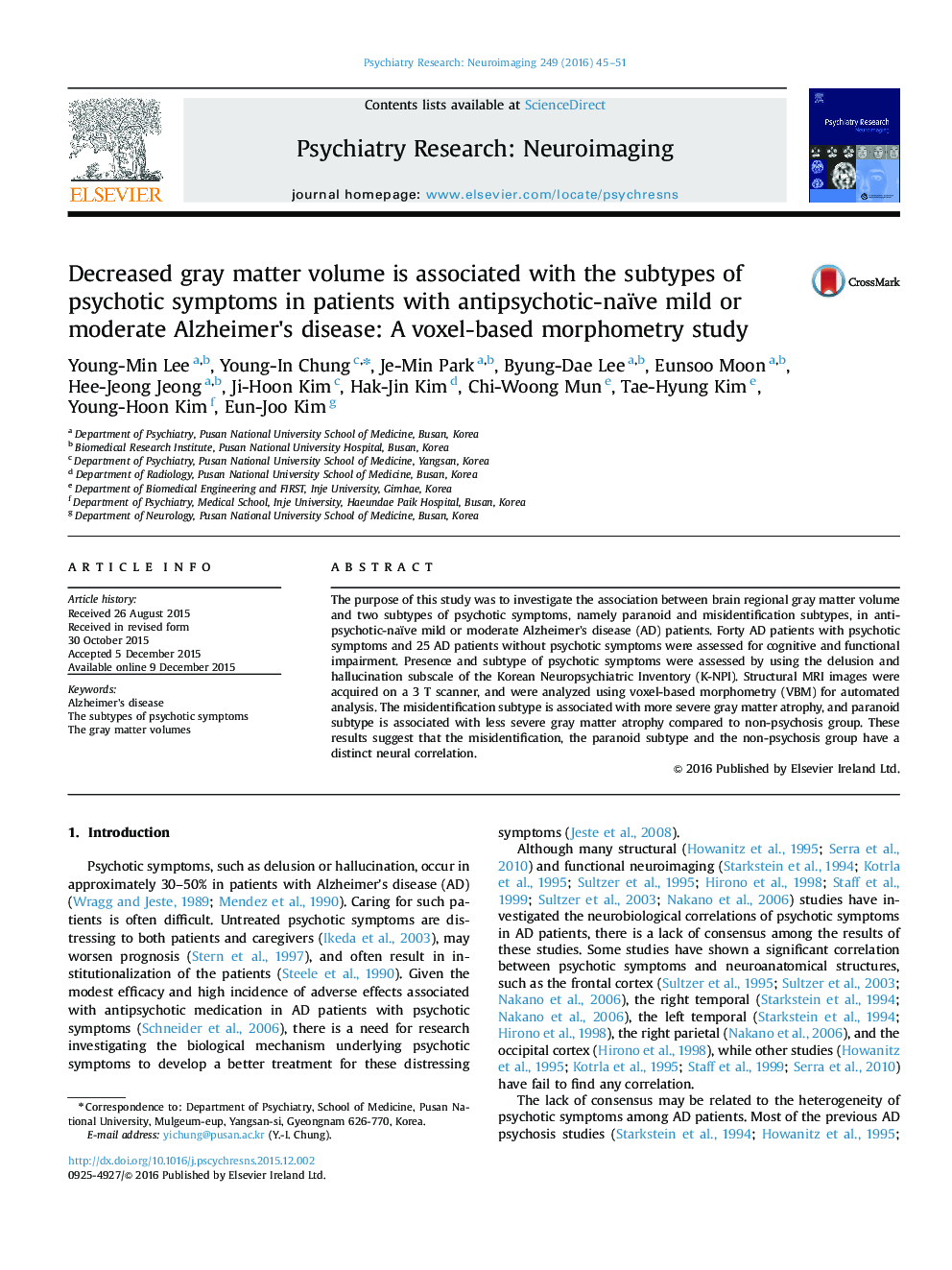| Article ID | Journal | Published Year | Pages | File Type |
|---|---|---|---|---|
| 335446 | Psychiatry Research: Neuroimaging | 2016 | 7 Pages |
•The purpose of this study was to investigate the association between gray matter volume and two subtypes of psychotic symptoms, namely paranoid and misidentification subtypes, in antipsychotic-naïve mild or moderate AD patients.•Misidentification subtype compared with non-psychosis group showed more significantly decreased gray matter volume.•Misidentification subtype compared with paranoid subtype showed more significantly decreased gray matter volume.•Non-psychosis group compared with paranoid subtype showed more significantly decreased gray matter volume.•These results suggest that misidentification, paranoid subtype and non-psychosis group have distinct neural correlate.
The purpose of this study was to investigate the association between brain regional gray matter volume and two subtypes of psychotic symptoms, namely paranoid and misidentification subtypes, in antipsychotic-naïve mild or moderate Alzheimer's disease (AD) patients. Forty AD patients with psychotic symptoms and 25 AD patients without psychotic symptoms were assessed for cognitive and functional impairment. Presence and subtype of psychotic symptoms were assessed by using the delusion and hallucination subscale of the Korean Neuropsychiatric Inventory (K-NPI). Structural MRI images were acquired on a 3 T scanner, and were analyzed using voxel-based morphometry (VBM) for automated analysis. The misidentification subtype is associated with more severe gray matter atrophy, and paranoid subtype is associated with less severe gray matter atrophy compared to non-psychosis group. These results suggest that the misidentification, the paranoid subtype and the non-psychosis group have a distinct neural correlation.
